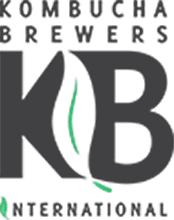Metagenomic analysis of domesticated kombucha multi-microbial culture.
Authors:
L P Ovcharenko
Abstract:
Aim: To screen the microbial community of domesticated kombucha microbial culture (known as tea "fungus") using an analysis of metagenomic data. Methods. DNA barcoding based on pyrosequencing data. Phylogenetic and cultural analyses. Results. Probiotics occupy a wide niche within this sector because of keeping gut health and boosting the immune system, memory, and mental sharpness. Kombucha beverage is becoming increasingly popular around the world today as a prophylactic and healing agent. Kombucha culture (KC) is an example of a multi-microbial community with mutualistic relationships between its members. Bacterial and fungal barcoding followed by alignment with sequences from public databases revealed 2 bacterial (Proteobacteria and Firmicutes) and 1 fungal phyla (Ascomycota) in the KC, and an unprecedented number of yeast operational taxonomic units (OTUs) were detected. The acetobacteria of the Gluconacetobacter and Gluconobacter genera dominated in KC metagenome in both phases of the kombucha micro-system (a pellicle and a cultural liquid) with a few bacterial species of the Gluconacetobacter genus and Gluconobacter oxydans. Also, there were plenty of unknown but clonal bacterial and fungal species, meaning that the blast scores were not sufficient to reliably assign them to specific taxonomic units, but several conserved patterns of blast hits were observed suggesting that these unidentified reads had originated from several sources of unknown species not represented in the used reference databases. However, the core community was represented by the 13 most abundant OTUs of bacteria and yeast. It was found that the most heavily sequenced bacteria and yeast in KC were not almost related to the cultured species Conclusions. The results of pyrosequence-based DNA barcoding showed that the Ukrainian ecotype of kombucha culture contains uncultivable representatives of yeast, which where not described earlier. As some of them represented major populations, we may speculate that these species are true kombucha 'aborigens,' but are uncultivable and non-identified. In general, our study exhibited a lower representation of cultured species with respect to whole members of KC. Cultivable forms of the bacterial community members well matched with the pyrosequencing data; however, some OTUs were not proven by traditional cultural analysis. Copyright of Biopolymers & Cell is the property of the Institute of Molecular Biology & Genetics NAS of Ukraine, and its content may not be copied or emailed to multiple sites or posted to a listserv without the copyright holder's express written permission. However, users may print, download, or email articles for individual use. This abstract may be abridged. No warranty is given about the accuracy of the copy. Users should refer to the original published version of the material for the full abstract.
Country: Ukraine
Citation: Biopolymers & Cell . 2012 Special Issue, p16-16. 1p.
Study Mailing Address:
Biopolymers & Cell is the property of Institute of Molecular Biology & Genetics NAS of Ukraine
Date Updated: March 28, 2020
 0 people like this study.
0 people like this study.